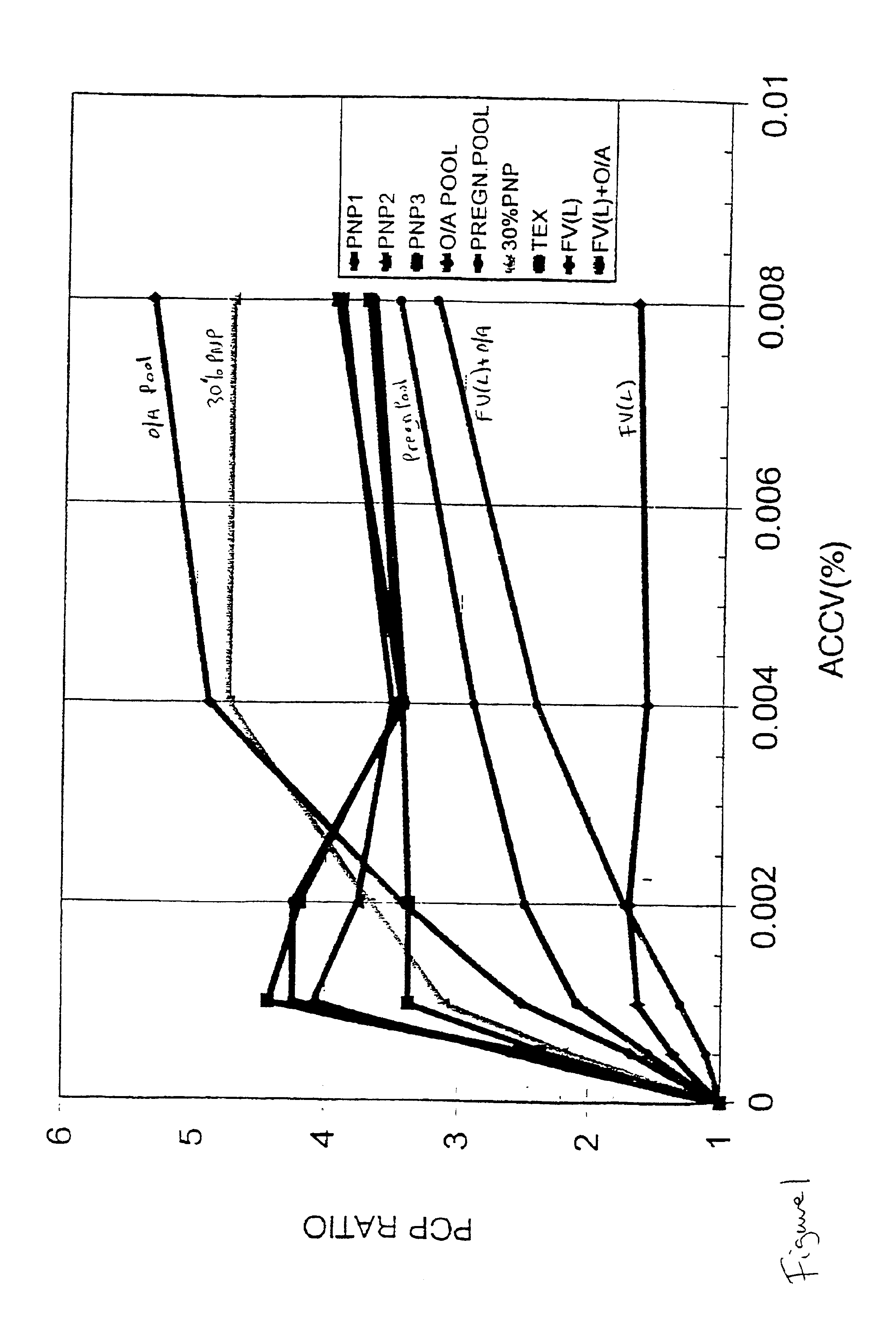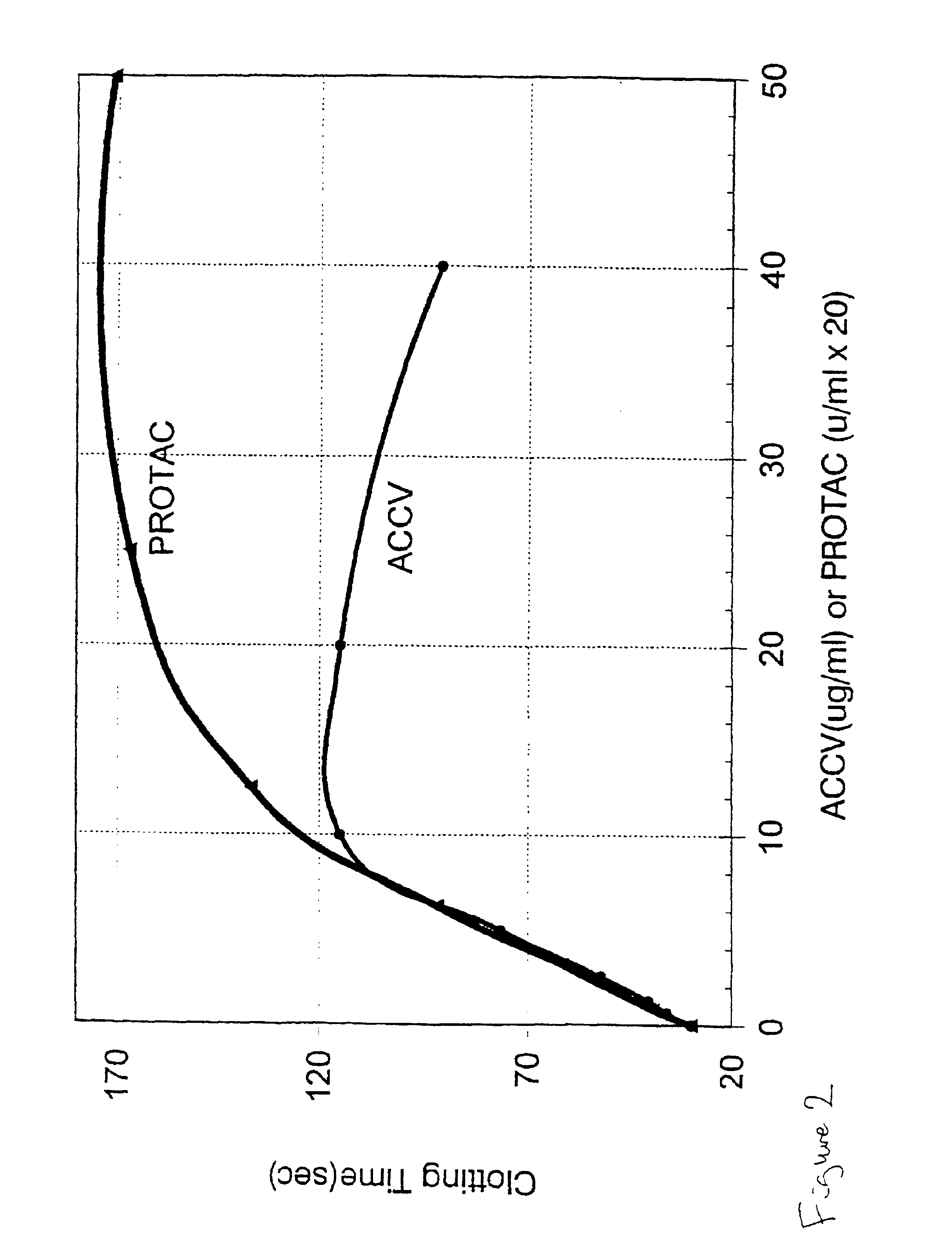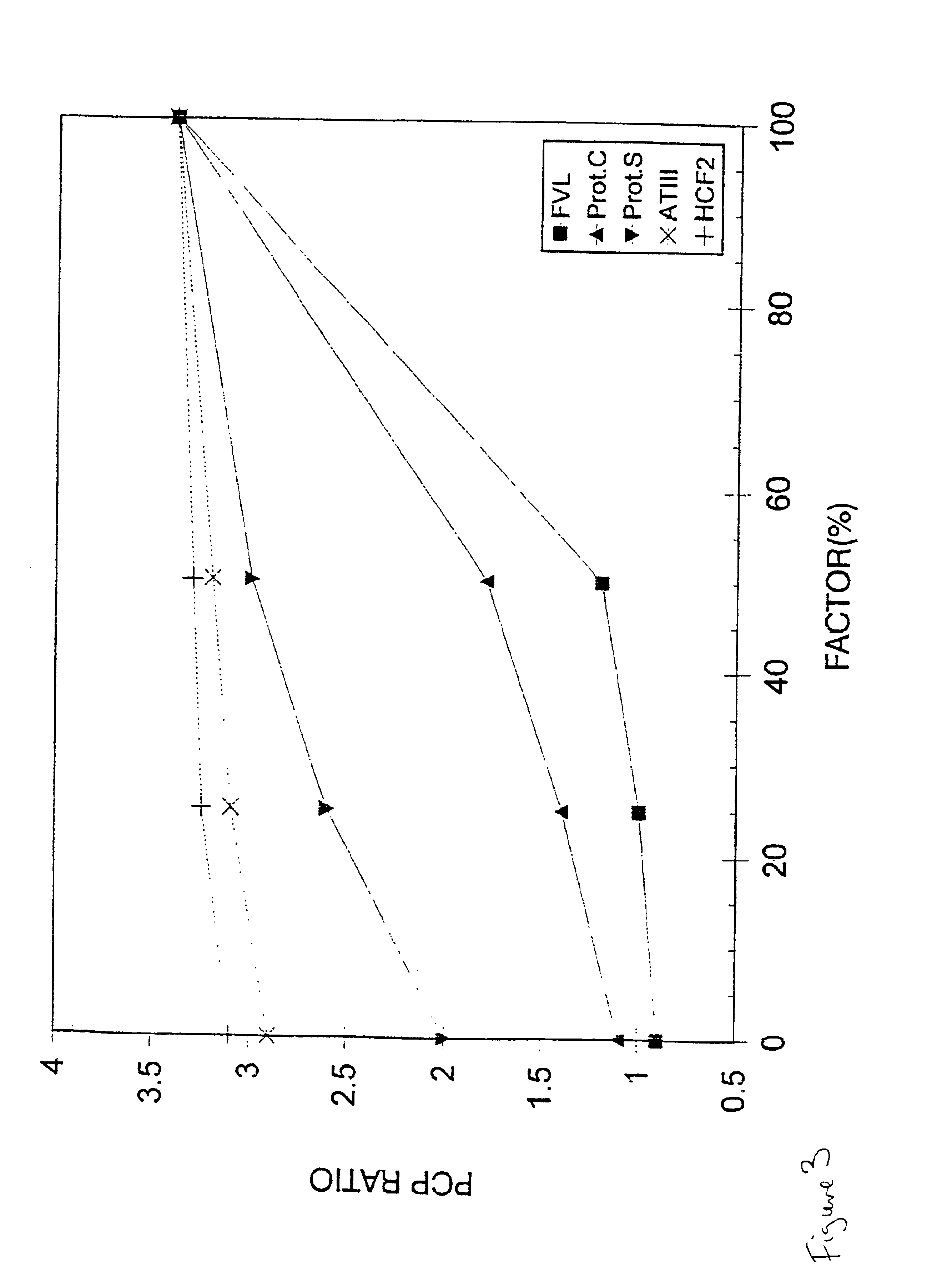Method for determining the coagulation potential of a plasma sample
a plasma sample and coagulation potential technology, applied in the direction of material testing goods, biochemistry apparatus and processes, instruments, etc., can solve the problems of affecting the coagulation potential of the individual from which the sample is derived, and the risk of thrombosis may be higher than normal, so as to achieve the effect of minimising interference and high ionic strength
- Summary
- Abstract
- Description
- Claims
- Application Information
AI Technical Summary
Benefits of technology
Problems solved by technology
Method used
Image
Examples
Embodiment Construction
Method
A method is described for a clotting test which is more specific for detecting resistance to activated protein C due to the factor V(Leiden) mutation than the original system described by Dahlback. The method involves 2 steps. In the first step, test plasma is incubated with dilute whole Agkistrodon Contortrix venom at 0.002-0.004% and pH 7.5 for 5 minutes. In the second step, phospholipid-rich Russell viper venom is added and the time required for a fibrin clot to form is determined.
A “control” or blank test to detect baseline coagulation abnormalities may be carried out in exactly the same way, except that no Agkistrodon Contortrix venom should be present in the first pre-incubation step. Chromogenic substrates could be used as an alternative to clot formation for detecting the formation of thrombin, but these are more expensive.
Mechanism
It is known that Agkistrodon Contortrix venom contains an activator of protein C. The active component has been isolated and sold under the...
PUM
| Property | Measurement | Unit |
|---|---|---|
| clotting time | aaaaa | aaaaa |
| clotting time | aaaaa | aaaaa |
| pH | aaaaa | aaaaa |
Abstract
Description
Claims
Application Information
 Login to View More
Login to View More - R&D
- Intellectual Property
- Life Sciences
- Materials
- Tech Scout
- Unparalleled Data Quality
- Higher Quality Content
- 60% Fewer Hallucinations
Browse by: Latest US Patents, China's latest patents, Technical Efficacy Thesaurus, Application Domain, Technology Topic, Popular Technical Reports.
© 2025 PatSnap. All rights reserved.Legal|Privacy policy|Modern Slavery Act Transparency Statement|Sitemap|About US| Contact US: help@patsnap.com



